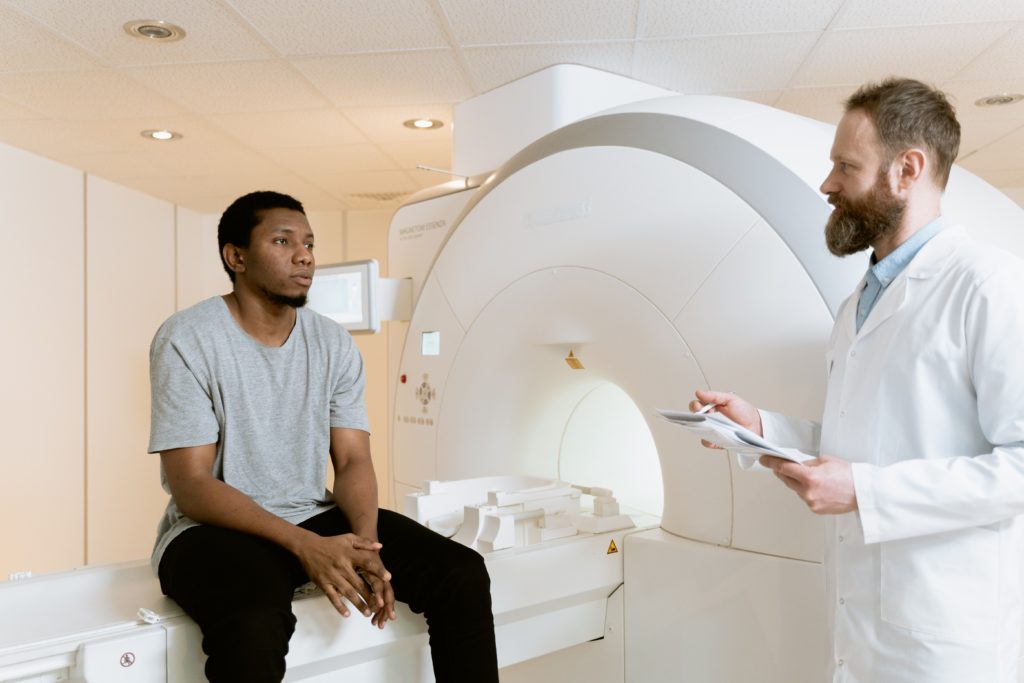When my gastroenterologist noticed I had elevated liver numbers in late 2017, one of the procedures she scheduled was an MRCP. Keep on reading to learn what an MRCP looks for, my experience with the procedure, and why my doctor and I opted for an MRCP to help investigate my possible primary sclerosing cholangitis (PSC).

What is an MRCP and Why Did My Doctor Schedule One?
An MRCP stands for Magnetic Resonance Cholangiopancreatography. (Wow, that’s a mouthful.) Basically it’s non-invasive imaging that analyzes your liver, gallbladder, bile ducts, and pancreas. MRCPs search for:
- Obstructions, blockages, or stones
- Swelling and inflammation
- Tumors
- Infections in the bile ducts, called cholangitis
Ultimately, an MRCP should help us determine if I have PSC or not.
I dreaded this procedure because I knew it would involve the intestinal dye, barium sulfate, just like the time before when I had my MRE. Just its name brought back nightmares of the thick, slimy, milk-like substance that I could barely keep down.
An MRCP is a popular go-to procedure to help diagnose PSC because it’s non-invasive and can identify strictures, distorted bile ducts, fibrosis, and cirrhosis.

My MRCP Experience
When I arrive for my MRCP, the technician handed me a glass of barium sulfate and told me to drink it quickly. Thank God it was only one glass instead of four (I had to chug four before my MRE!), but even one is difficult to get down.
The barium is used to dye certain parts of your intestines so the imaging can capture a clear shot and any abnormalities can be easily identified.
I drank the revolting potion as fast as I could. Which was slowly.
He sauntered back to my waiting station and told me that if I didn’t finish it now, I’d be skipped and he’d start the imaging for the person after me.
So I threw my head back, and somehow, managed to keep it down.
The technician rolled me into the cylindrical machine, and I let the white walls and buzzing noises cradle me. During this time, I was in a terrible flare and I prayed the flare wouldn’t attack while in the middle of the machine. It didn’t.
My Disappointing MRCP Results
A week later, I reviewed my results online.
Somehow, in the middle of a flare and rising liver numbers, the results said that everything was “normal” and “unremarkable.”
I was shocked and disappointed. Many PSC patients get their official diagnosis through MRCPs, so I was hoping this procedure would give me answers. And while it was good news that nothing bad was caught, I was still left confused, scared, and undiagnosed.
Why MRCP Results are Sometimes Normal, Even if You Have PSC
My GI was disappointed by these results too. She explained that PSC can be tricky—sometimes symptoms show and sometimes they don’t. This is common when PSC is still in its early stages.
My GI believed I was likely in the very beginning stages of PSC, which was making it very difficult to diagnose. So she and I regrouped and chose our next course of action: vancomycin.
Related Posts
Are you having trouble sleeping? Looking forward to the next Comical Colon.
For the most part, thankfully, I haven’t had trouble sleeping. At least when I’m in remission. When I’m in a flare, I’m nearly always fatigued and sleep-deprived.